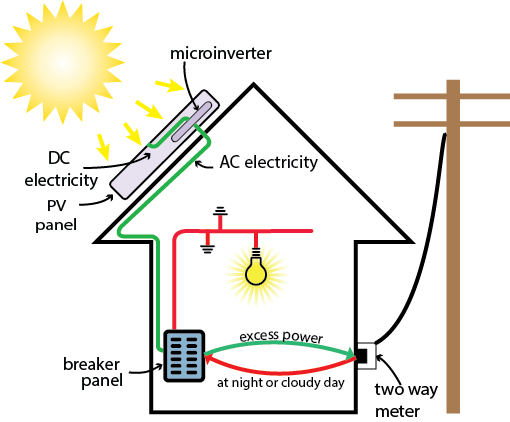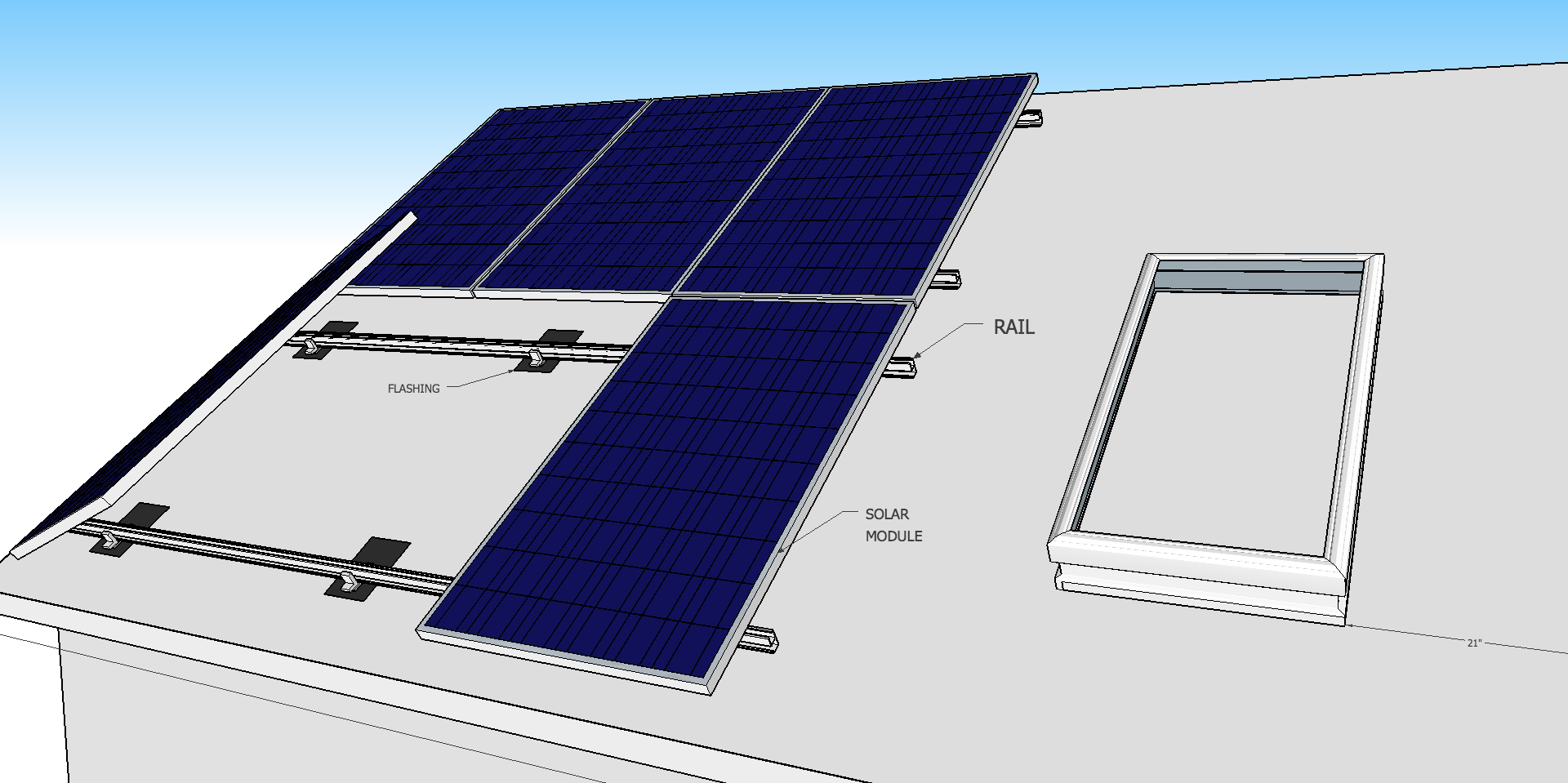The Alberta Micro-Generation Regulation makes it simple for Albertans to connect a renewable micro-generation system such as solar, wind, and biomass to the electricity grid. We often get asked how many panels does a building need to “go solar”. With a grid-tied solar power (solar electric or solar photovoltaic) system the decision is yours. It is the easiest, simplest and most cost-effective way to harness the sun’s energy in Alberta’s climate. Because you are still tied to the grid, you do not require batteries and will be able to receive credit for excess energy your system exports to it:

How Grid-Tied Solar Power Works
Sunlight captured
Solar cells in a solar panel/module capture sunlight generating an electrical current. Click here to learn more about Alberta’s solar potential.
DC to AC
DC electricity generated by the solar panels is converted to AC electricity in an inverter. Inverters located on the roof underneath the panels are called micro-inverters. They process the output of one to four solar panels and allow the output of each panel to be optimized independently of other panels. A string inverter processes the output of many panels and is therefore bulkier and located near the electrical panel that feeds some (or all) of a building’s appliances.
Load reduced
The AC electricity from the inverter is transmitted to a building’s distribution panel, effectively reducing the amount of power drawn from the utility grid by the connected appliances.
Excess power exported
Excess electricity not used in the building is exported to the grid to do useful work elsewhere, like powering your neighbour’s fridge. At night or on a cloudy day appliances draw power from the grid as usual. A two way meter, which will be installed free of charge by your distribution company, measures the amount of energy exported and imported from your building.
Net Billing
At the end of your monthly billing cycle your consumption of grid energy is less, and you receive credit for excess energy exported to the grid at the same rate at which you are charged. For example if the cost of energy happens to be eight cents per kWh on a particular month a micro-generator will receive eight cents for every kWh exported to the grid during that billing period. Therefore micro-generators are able to leverage their consumption against rising utility rates without installing batteries. Click here to learn more about the economics of grid-tied solar power.

